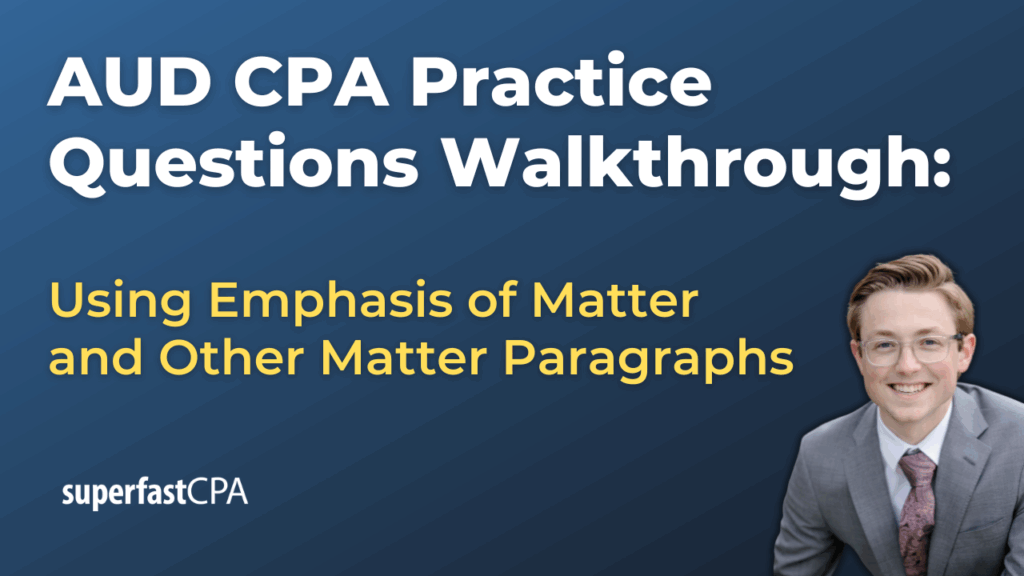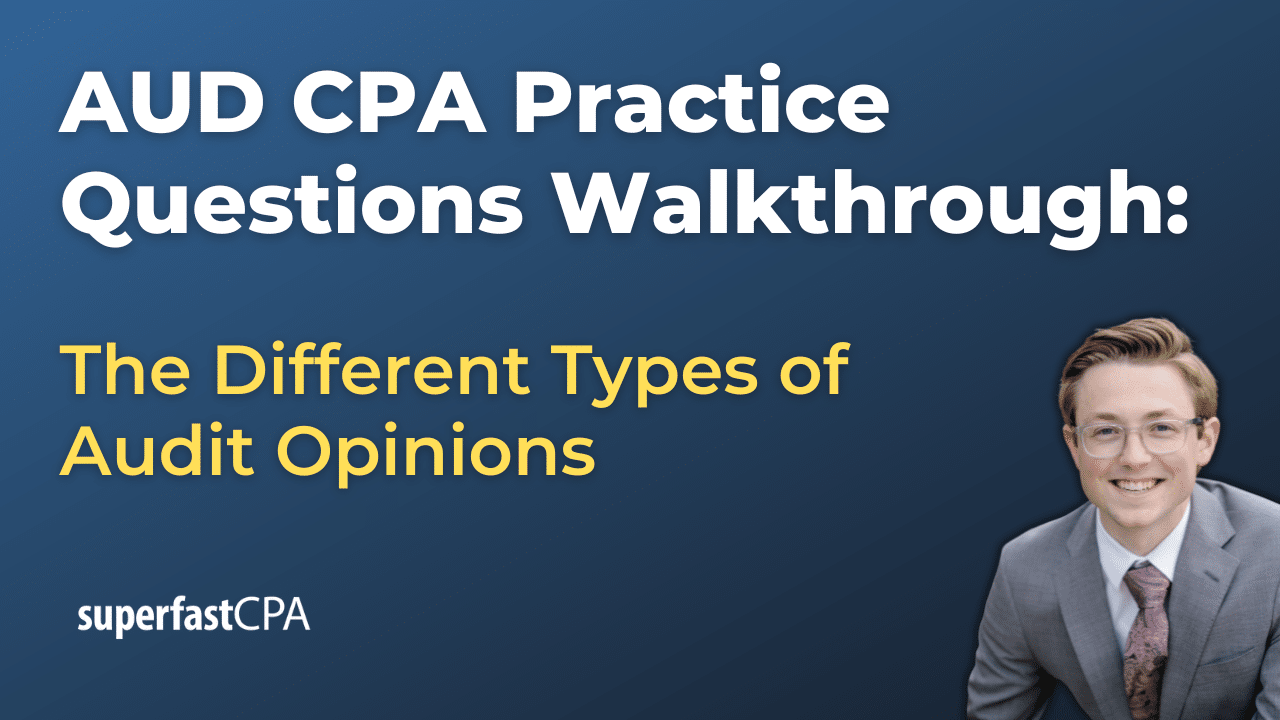In this video, we walk through 5 AUD practice questions teaching about using emphasis of matter and other matter paragraphs. These questions are from AUD content area 4 on the AICPA CPA exam blueprints: Forming Conclusions and Reporting
The best way to use this video is to pause each time we get to a new question in the video, and then make your own attempt at the question before watching us go through it.
Also be sure to watch one of our free webinars on the 6 “key ingredients” to an extremely effective & efficient CPA study process here…
Using Emphasis of Matter and Other Matter Paragraphs
The inclusion of additional paragraphs in the auditor’s report allows auditors to communicate important information that, while not affecting the audit opinion, is relevant to users of the financial statements. The appropriate use of emphasis-of-matter, other-matter, and explanatory paragraphs depends on the type of entity being audited and the nature of the circumstances requiring further clarification.
Emphasis-of-Matter Paragraphs (Applicable to Nonissuers)
An emphasis-of-matter paragraph is included in the auditor’s report when the auditor wishes to highlight a matter that is presented or disclosed in the financial statements and is fundamental to users’ understanding. These paragraphs are used in audits of nonissuers in accordance with AICPA standards.
Circumstances Where Inclusion is Required:
- A justified change in accounting principle that is applied retrospectively and has a material effect on the financial statements.
- A correction of a material misstatement in previously issued financial statements.
- The existence of substantial doubt about the entity’s ability to continue as a going concern.
- Financial statements prepared using a special purpose framework (e.g., cash basis, tax basis).
Situations Where Inclusion is Permissible Based on Auditor Judgment:
- Significant transactions with related parties.
- Unusually important subsequent events, such as major legal actions or regulatory changes.
- Major catastrophes having a significant financial impact.
- Voluntary early adoption of a new accounting standard.
An emphasis-of-matter paragraph is placed immediately following the opinion paragraph and must reference the specific note in the financial statements to which it relates.
Explanatory Paragraphs (Applicable to Issuers)
Explanatory paragraphs serve a similar function to emphasis-of-matter paragraphs but are used in audits of issuers under the standards of the Public Company Accounting Oversight Board (PCAOB). These paragraphs draw attention to matters appropriately presented or disclosed in the financial statements or provide additional context without modifying the opinion.
Examples of Situations Requiring an Explanatory Paragraph:
- A justified and retrospective change in accounting principle.
- Correction of a material misstatement in prior period financial statements.
- Substantial doubt regarding the entity’s ability to continue as a going concern.
- Financial statements prepared under a special purpose framework.
- Reference to the work of component auditors.
Unlike emphasis-of-matter paragraphs, explanatory paragraphs are specifically used in reports issued under PCAOB auditing standards and appear in issuer audit reports.
Other-Matter Paragraphs (Applicable to Nonissuers)
An other-matter paragraph is included in a nonissuer’s audit report to address matters that are not presented or disclosed in the financial statements but are relevant to users’ understanding of the audit, the auditor’s responsibilities, or the auditor’s report itself.
Examples of Appropriate Use:
- To indicate that the auditor’s report is intended for a restricted group of users.
- To explain that a predecessor auditor reported on the financial statements of prior periods.
- To describe the auditor’s involvement with required supplementary information.
- To explain the reissuance of a prior-period audit report.
- To communicate matters required by law or regulation that are not presented in the financial statements.
Other-matter paragraphs are positioned after the opinion and any emphasis-of-matter paragraph.
Summary of Differences
- Emphasis-of-matter and explanatory paragraphs are used to highlight information disclosed within the financial statements and do not affect the auditor’s opinion.
- Explanatory paragraphs are used in issuer reports; emphasis-of-matter paragraphs are used in nonissuer reports.
- Other-matter paragraphs are exclusive to nonissuer reports and address information outside the financial statements that is relevant to the audit or auditor’s responsibilities.
- All three paragraph types may be included in an unmodified (nonissuer) or unqualified (issuer) audit report, depending on the circumstances.
Key Concepts to Remember
- Emphasis-of-matter paragraphs highlight fundamental matters disclosed in the financial statements of nonissuers and are required in certain situations, such as going concern or a justified accounting change.
- Explanatory paragraphs serve the same purpose as emphasis-of-matter paragraphs but are used in issuer audit reports in accordance with PCAOB standards.
- Other-matter paragraphs are applicable only in nonissuer reports and address matters not presented in the financial statements but relevant to understanding the audit.
- These additional paragraphs do not alter the type of audit opinion expressed but serve to provide clarity and emphasis where necessary.
- Emphasis-of-matter paragraphs must refer to the related financial statement disclosure. If the matter is not disclosed in the statements, and it is still important to communicate, the auditor should consider using an other-matter paragraph instead.













